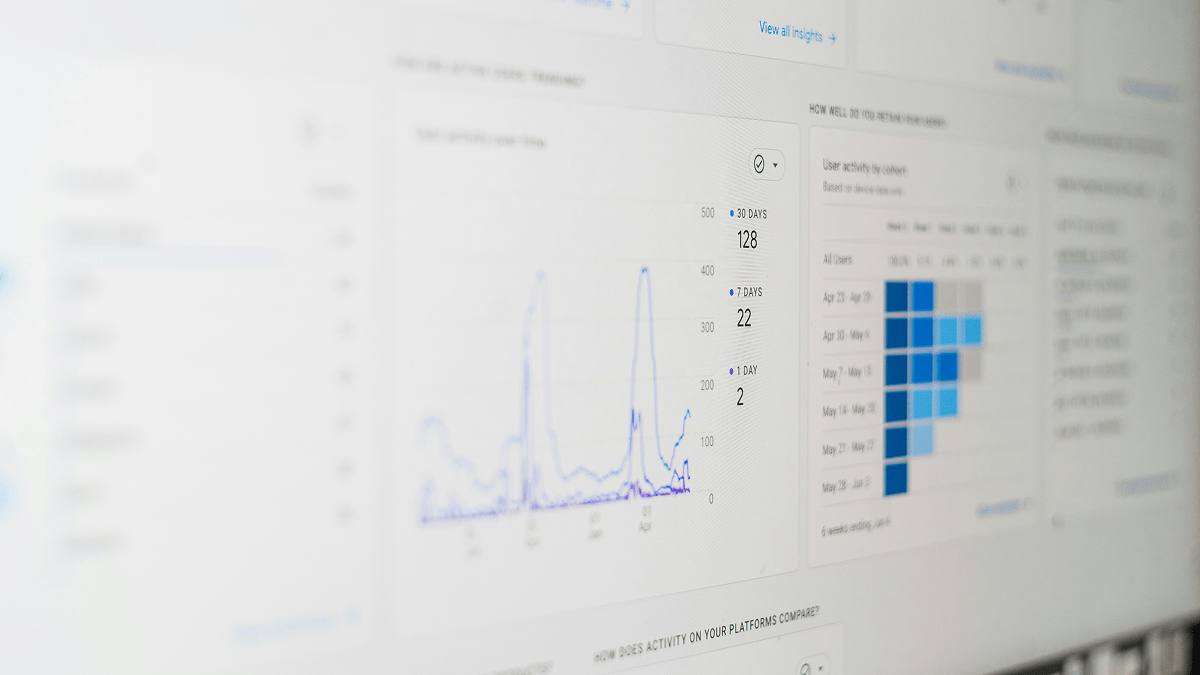Creativity alone no longer guarantees marketing success amongst today’s diverse and savvy consumers. Instead, marketing success hinges on marketing insights—the data-backed understanding of customer needs, behaviours, and preferences that fuel winning campaigns.
Without insights, businesses risk wasting budget, missing opportunities, and creating campaigns that fail to connect. But with them, brands can unlock campaign optimization, maximize ROI, and develop strategies that resonate with their target audiences.
At Maple Diversity Communications, we understand that research and insights aren’t just nice-to-haves—they are marketing research essentials. They allow brands to cut through the noise, craft authentic and inclusive messages, and optimize every stage of the campaign lifecycle.
In this article, we’ll explore why insights matter, the benefits of market research, and the steps to building strategies that win.
What Are Marketing Insights?
Marketing insights are actionable learnings drawn from analyzing data, trends, and behaviours – and they’re used by nearly 80% of businesses.
These insights go beyond raw numbers to reveal the “why” behind consumer actions, providing brands with a roadmap for insights-driven marketing. They can come from both primary market research (such as surveys, interviews, and focus groups) and secondary market research (such as industry reports, social media analysis, and competitor studies).
Unlike surface-level metrics, insights connect data to decision-making. For example, website traffic spikes might indicate interest, but an insight reveals which message or offer drove that interest—and how to replicate it. In short, insights transform raw data into strategy.
The Importance of Marketing Insights
Marketing insights are critical for aligning campaigns with business objectives. They:
- Inform smarter campaign research and strategy,
- Highlight opportunities for campaign budget optimization,
- Enable ongoing digital campaign optimization through A/B testing and performance tracking, and
- Strengthen customer relationships by demonstrating authenticity and relevance.
Brands that leverage insights are better equipped to make decisions that reduce risks, improve ROI, and ensure long-term growth. In today’s competitive markets, relying on assumptions is not only risky—it’s a recipe for wasted ad spend. Insights give your campaigns a foundation rooted in evidence, making them more resilient and adaptable.
Good vs. Poor Marketing Insights
High-quality insights are specific, actionable, and grounded in reliable data. Poor insights, by contrast, are vague, outdated, or based on assumptions rather than facts.
- Good Insight Example: “Mothers aged 30–45 in urban centers prefer email newsletters that highlight family-friendly offers on weekends.”
- Poor Insight Example: “Parents like discounts.”
The difference lies in precision. Good insights enable brands to optimize ad campaigns, refine their messaging, and select the most effective channels. Poor insights can waste resources and weaken brand credibility.

Examples of Marketing Insights
- Domino’s introduced its “Pizza Tracker” after research revealed customers wanted transparency in delivery, fueling exponential growth.
- Pepsi’s “Better with Pepsi” campaign used taste-test insights to reposition itself against Coca-Cola, generating buzz and strengthening brand relevance.
- Nike’s social awareness campaigns leveraged insights into consumer values, enhancing loyalty and brand reputation.
- Apple’s “Think Different” campaign tapped into customer identity and emotion, positioning the brand as visionary and fueling a remarkable comeback.
The Strategic Advantages of Market Research
Market research is the foundation of any successful marketing strategy. By systematically gathering and analyzing data, brands can make informed decisions that minimize risk, optimize resources, and maximize the impact of their campaigns.
Understanding your audience, the competitive landscape, and emerging trends allows marketers to craft campaigns that resonate and deliver measurable results.
Creating Consumer-Centric Products and Services
Research ensures products and services align with customer needs. This level of campaign optimization results in higher adoption rates, enhanced customer experiences, and stronger brand loyalty.
Cost Savings Through Research
Businesses report an ROI of more than 4x from market research. By testing ideas before full-scale rollouts, brands reduce the risk of costly missteps. This supports ad revenue optimization and allows for more efficient allocation of marketing budgets.
Boosting Marketing Efficiency
Well-executed research accelerates decision-making, streamlines workflows, and improves overall marketing productivity, enabling campaign budget optimization and faster time-to-market.
Designing Effective and Targeted Campaigns
Data-driven insights help brands create emotionally resonant campaigns. Optimized ad copy, visuals, and offers ensure that marketing campaign optimization is both strategic and impactful.
Understanding Brand Positioning
Research provides a clear view of brand perception, awareness, and market positioning. This insight helps teams develop actionable marketing insights reports to guide improvements.
Gaining Competitive Intelligence
Analyzing competitors allows brands to identify their strengths, weaknesses, gaps, and opportunities for differentiation, supporting smarter ad campaign optimization.
Planning for Growth and Scaling
Insights guide expansion into new markets or product categories, helping brands make informed decisions and scale sustainably.
Shaping the Future of Your Brand
Market research reveals emerging trends and evolving consumer behaviours, enabling innovation and ensuring long-term brand relevance.
Building Strong Consumer Relationships
Continuous research helps brands to stay authentic and responsive to changes, fostering trust, engagement, and loyalty among their audiences.
Defining the Brand Voice
Insights help determine the tone and personality that resonate most with the target audience, whether bold, witty, socially conscious, or inclusive, strengthening brand identity and connection.
How to Get Marketing Insights
Twenty-one percent of marketing professionals cite insufficient marketing attribution—an analytics technique that tracks customer behaviour—as a significant challenge.
Fortunately, brands can generate insights from multiple sources, combining both qualitative and quantitative methods. Integrating these approaches ensures that insights are not only descriptive but also actionable, directly informing campaign research, ad copy optimization, and overall marketing strategy.
Qualitative Methods
Qualitative methods, such as interviews, focus groups, and open-ended surveys, provide a rich and
nuanced understanding of customer motivations, preferences, and behaviours. These methods help
uncover deep insights that numbers alone cannot reveal.
Quantitative Methods
Quantitative methods, including analytics, polls, and performance tracking, supply measurable data that can guide digital campaign optimization and email campaign optimization efforts. This data helps validate hypotheses and identify trends on a large scale.
Customer Feedback Channels
Leverage email, chatbots, and review platforms to collect firsthand qualitative data on consumer experiences. These insights often reveal pain points or emerging needs that can guide product development and marketing messaging.
A/B and Multivariate Testing Platforms
Use tools like Optimizely or Google Optimize to test variations in ad copy optimization, landing pages, and CTAs. Testing reduces risk and accelerates learning about what resonates best with your audience.
Top Tools for Getting Marketing Insights
When it comes to uncovering what your customers want and how your marketing is performing, the right tools make all the difference. Here are some of the most popular platforms for gathering marketing insights:
- Google Analytics: For tracking digital behaviours and performance
- SEMrush / Ahrefs: For competitor research and SEO performance
- SurveyMonkey / Typeform: For primary data collection via surveys
- Social Listening Tools (Hootsuite, Sprout Social): For monitoring sentiment and conversations
- Ad Optimization Tools (Google Ads Manager, Meta Ads Manager): For refining campaigns in real time

Marketing Insights Reports
Compile and analyze findings into structured reports that guide ongoing strategy and campaign research. These reports can evolve with your campaigns and provide benchmarks for success.
Internal and External Research Collaboration
Sometimes the best insights come from combining internal customer data with external reports. Partnering with agencies like Maple Diversity Communications allows brands to integrate cultural intelligence into their research, ensuring campaigns resonate across diverse audiences.
Steps to Follow When Conducting Marketing Research
1. Identify Target Audience
Build personas using both primary market research advantages and disadvantages (e.g., firsthand data but costly) and secondary market research advantages and disadvantages (e.g., cost-effective but less specific).
2. Analyze Competitors
Evaluate competitors’ messaging, platforms, frequency, and share of voice. Understanding what others are doing helps identify opportunities for ad campaign optimization that differentiate your brand.
3. Identify Unique Opportunities for Stronger Markets
Spot underserved segments, emerging needs, or gaps in service. For example, brands that identify cultural or linguistic gaps can design more inclusive campaigns that expand market reach.
4. Evaluate Engagement
Measure where your audience interacts most—whether through social media, video, or email campaign optimization. Engagement analysis helps ensure resources are directed to the most effective platforms.
5. Identify Problems and Create Solutions
Pinpoint underperforming areas (e.g., timing, tone, or platform choice) and refine accordingly. For instance, if email open rates are low, insights may reveal the need for subject line testing or more effective audience segmentation.
6. Run Tests Based on Your Findings
Deploy A/B testing or pilot campaigns to validate assumptions before scaling. This minimizes risk while ensuring learnings are immediately actionable.
7. Restructure Your Marketing Efforts
Apply insights to restructure campaigns, reallocate budgets, or even reframe your product positioning for improved digital campaign optimization. This iterative process ensures your marketing evolves with your audience.

FAQs
What are marketing insights?
Marketing insights are actionable takeaways derived from data analysis, used to inform decision-making and optimize marketing campaigns.
What is the difference between primary and secondary market research?
Primary research involves direct collection from customers (surveys, interviews). Secondary research relies on existing data (reports, social media). Both have advantages and disadvantages depending on goals.
How can marketing insights improve campaign performance?
Insights help optimize messaging, targeting, and channels, supporting ad campaign optimization and higher ROI.
What tools can provide marketing insights?
Analytics platforms, social listening tools, ad optimization platforms, and survey tools are key marketing insights tools.
Why is campaign research essential?
It minimizes risks, informs smarter investments, and leads to insights-driven marketing strategies.
How do marketing insights affect ad revenue optimization?
By revealing which channels, messages, and formats perform best, insights ensure ad budgets are spent efficiently, directly improving revenue.
Can marketing insights support long-term brand loyalty?
Yes. By continuously listening to consumer needs and adjusting strategies, brands demonstrate authenticity and care—key drivers of loyalty.
Conclusion: Successful Campaigns Need Marketing Insights
In a crowded market, success depends on more than creative slogans or eye-catching visuals. It requires a deep understanding of your audience, competitors, and industry shifts. Marketing insights provide the roadmap, transforming raw data into strategies that resonate, inspire, and convert.
At Maple Diversity Communications, we believe inclusive, culturally intelligent campaigns begin with insights. From ad copy optimization to ad revenue optimization, research fuels every decision. By investing in research and insights, brands not only avoid wasted budgets but also unlock opportunities to scale, innovate, and build lasting relationships with their audiences.
If your business is ready to elevate campaigns with evidence-backed strategies, we can help. Our team specializes in integrating marketing research essentials with inclusive storytelling, ensuring your brand connects authentically with diverse audiences. Contact us today to learn more!






